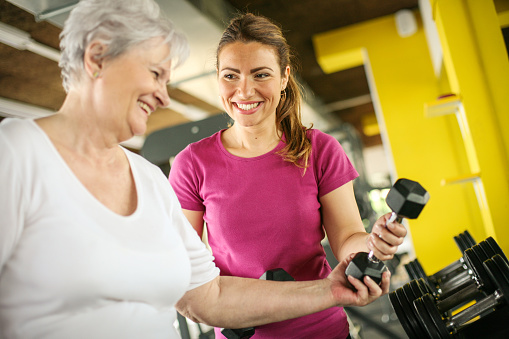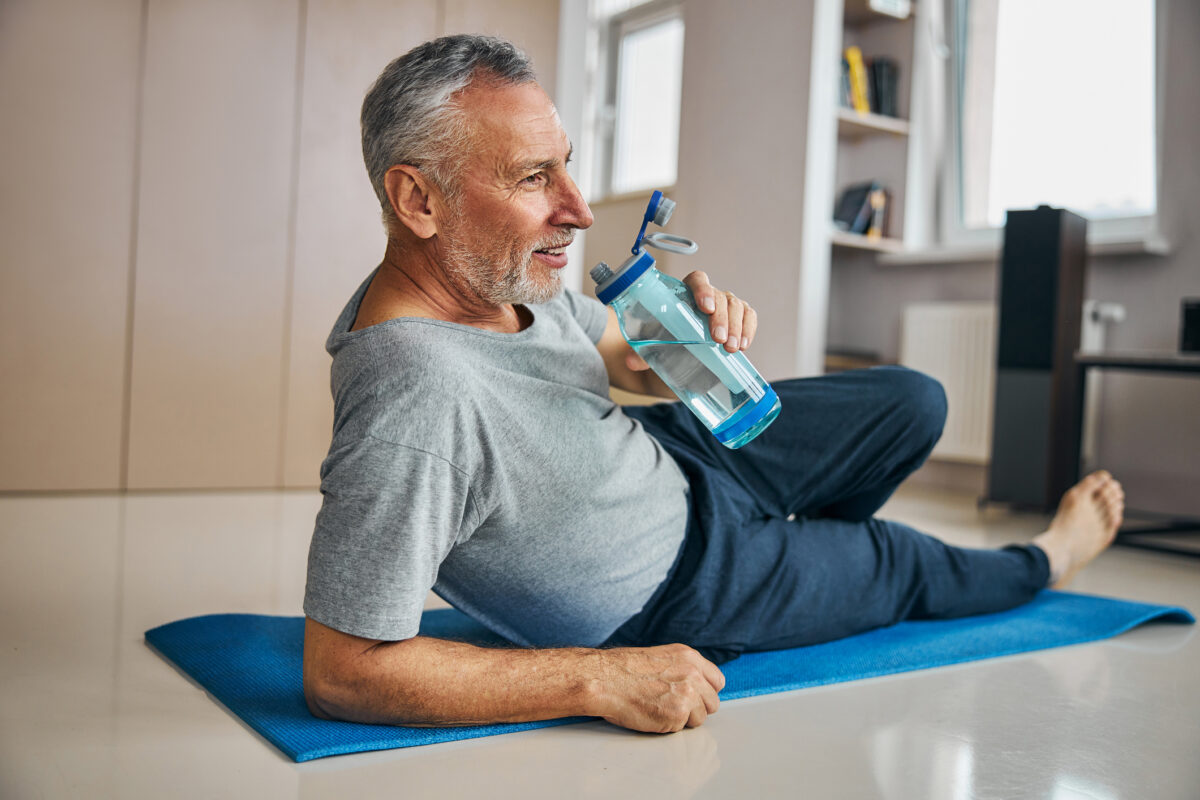Working out is a great way to improve health at any age, but jumping into a strenuous exercise regimen can lead to injuries, especially for people age 50 and older.
It’s important for people who have not been exercising regularly to begin slowly and avoid the temptation to push themselves too hard, said Dr. Monali Y. Desai, a cardiologist who practices in the greater Atlanta area.
Starting slowly requires patience, but there are good reasons to ease into a regular fitness program. The National Institute on Aging reports that exercise is important to the physical and mental health of older adults.
The benefits of exercise may include reduced stress levels, improved cognitive abilities, and less bone loss. An exercise program can help manage and prevent such diseases as diabetes, heart disease, breast and colon cancer, and osteoporosis.
Good physical and mental health also can help people remain independent as they age. Exercise is associated with a slower rate of decline in thinking skills.
While everyone can benefit from visiting a doctor before starting an exercise program, this may be especially beneficial for people over age 50. “I recommend that you don’t start exercising without talking to your primary care doctor first, as you may need to modify exercises based on your medical conditions or functional capacity,” said Desai.
Although she recommends beginning with low-intensity workouts, Desai notes that not all people over 50 have to worry about physical limitations. Fitness and ability varies from individual to individual, depending on their health and how accustomed they are to physical activities.
Exercising Safely
Some people benefit from working with a personal trainer to stay motivated and exercise safely. Before you hire one, decide what your fitness goals are. For example, if you want to lose weight, try to find a trainer with expertise in weight loss.
Jeff Miller, a personal trainer in Albany, N.Y., works primarily with people age 50 and older. One of his goals is to help his clients avoid injuries so they don’t miss training sessions while they’re recovering. A trainer can warn you not to push yourself too hard, but ultimately it’s up to you to know when to slow down, Miller said. It takes time to achieve your fitness goals.
In addition to improving endurance and strength, Miller encourages his clients to include activities that improve balance, such as tai chi, a gentle form of exercise that promotes inner peace and relaxation through movement. Improved balance can reduce the risk of falling, a key cause of injuries for older people.
According to the Centers for Disease Control and Prevention, one out of five falls causes a serious injury. Every year 3 million older Americans are treated in emergency departments for injuries sustained in falls. More than 95 percent of hip fractures are the result of falls.
Listening to Your Body
It’s always a good idea to listen to your body when exercising. If you are in pain, consider reducing your pace or changing exercise routines. It’s very important to protect joints from injury, said Desai.
“People with arthritis should pick aerobic activities that minimize joint stress,” she said. “The best option is usually water exercises. If you don’t have a pool available to you, other good options include walking, cycling and the rowing machine. Muscle strengthening exercises should be started at a low intensity and you should progress as your pain allows.”
AARP, an advocacy group for people age 50 and older, says elliptical exercise machines can help protect joints. They simulate walking or running, but with less wear and tear on your body. Because they are adjustable, you can choose a level of difficulty that suits your ability.
Miller said people over 50 often don’t get enough rest between workouts. Exercising every day may not give your body enough recovery time.“As you get older, you should allow yourself more rest days,” he said.
The trainer, who recently turned 50, said he has begun modifying his own exercise routine to accommodate aging. For example, he said he has given up pull-ups, even though he enjoys doing them, because they put too much stress on his shoulders. There are plenty of ways to stay fit without risking injury, he said.
Choosing Forms of Exercise
The type of exercise you choose should take into consideration your health and level of fitness. With clients who have not been working out at all, Miller typically has them start off very slowly, increasing repetitions and exercise time gradually. For those who are sedentary, the initial workouts may consist of movements as simple as sitting and standing.
Amanda Dale, a personal trainer based in Singapore, says the key to maintaining fitness after age 50 is finding activities that you enjoy doing. The more you enjoy an activity, the more likely you are to do it.
“The common denominator for seniors that stay fit after 50 is that they’ve found something they’re passionate about, passionate enough to make it a routine, not just a hobby,” she said.
The Department of Veterans Affairs recommends a number of exercises for people age 50 and older. They include:
Walking. This is one of the easiest ways to exercise. The only equipment you need is a good pair of walking shoes. The veterans department recommends beginning with a short daily walk of 10 minutes and increasing your time gradually. You’ll walk more often if you choose interesting and convenient routes. Avoid steep hills and difficult terrain. Finding a walking companion can make your trek more enjoyable.
Core. Exercising your body’s core requires you to focus on your abdominal muscles, which are important for good posture, breathing, and back health. Leg lifts and sit-ups are examples of core exercises.
Strengthening. This can involve lifting weights. Be sure to start with light weights and increase the amount you lift gradually. If you are not used to exercising, you may need to begin with only a pound or two. “Studies have shown that lifting weights just twice per week for about 30 minutes is enough to rebuild lean muscle mass,” said Dr. Caroline Apovian, director of the Nutrition and Weight Management Center at the Boston Medical Center.
Sports. This can involve anything from swimming to pickleball. Any sport that raises your heart rate can be helpful. Joining a park and recreation sports league can be a good motivator for exercise.
Yoga. This doesn’t require you to raise your heart rate but it will improve your flexibility and balance. According to AARP, yoga can reduce hypertension, strengthen bones, protect joints, and help prevent you from gaining weight. It’s best to start off slowly and work your way up to the tougher poses. Here are 3 great yoga poses for beginners.
Incorporating Exercise Into Daily Life
All movement supports fitness, even taking a short walk to the corner grocery store or playing outdoors with grandchildren.
Miller said exercise can be incorporated into everyday activities. These might include using a staircase instead of taking an elevator or parking your car on the outer edge of a shopping center parking lot so you will do more walking.
Apovian said she often sneaks in a few minutes of exercise several times a day. She uses stairs when possible and paces while in her office. While watching television, she does squats and jumping jacks during the commercials. During her lunch breaks she takes brisk walks.
Desai said people often stick to exercise programs when they make them a part of their regular daily routine.
“The goal would be for exercise to become so natural that you don’t even have to convince yourself to do it, just like you don’t have to convince yourself to brush your teeth every day,” she said.







Good information.